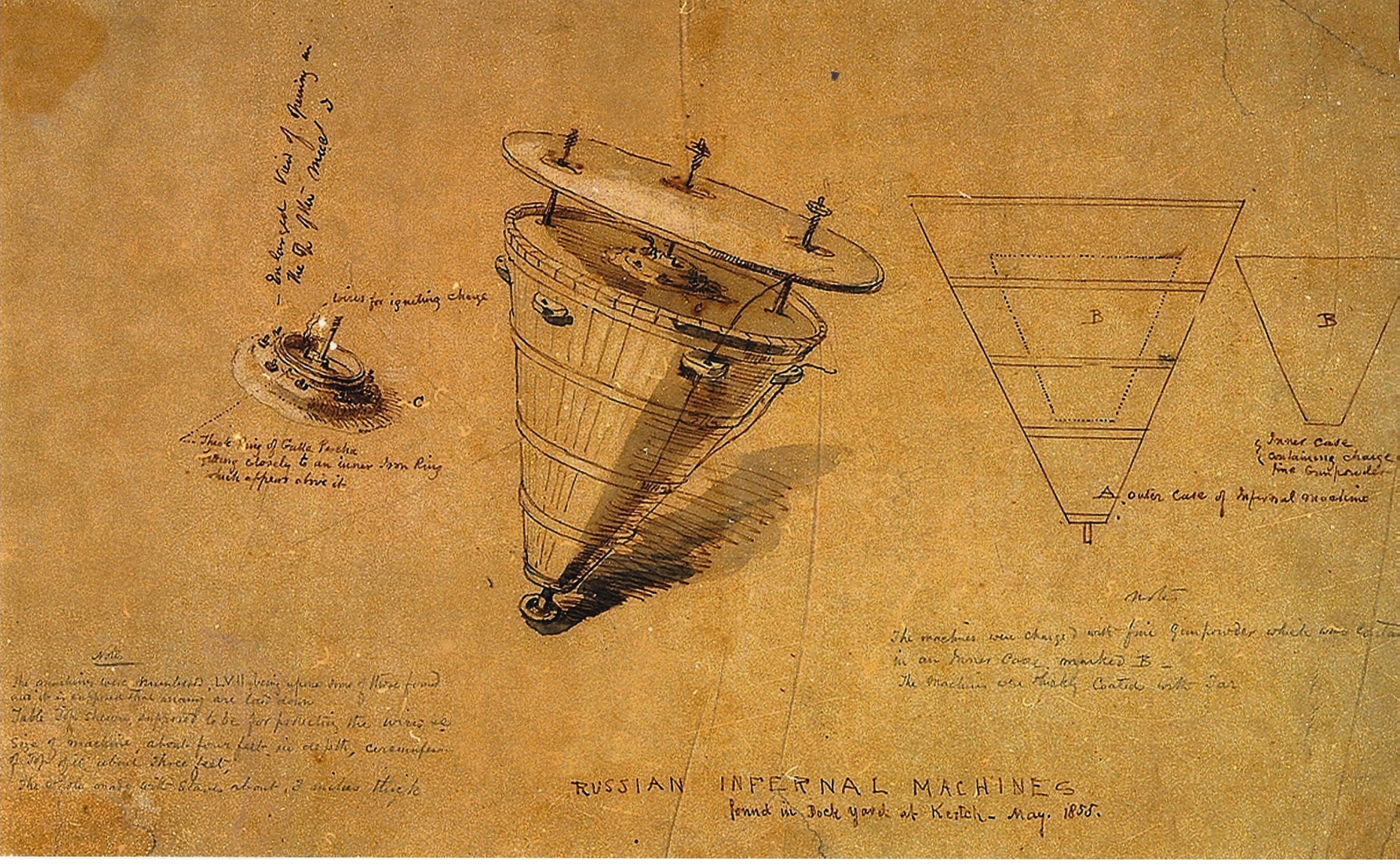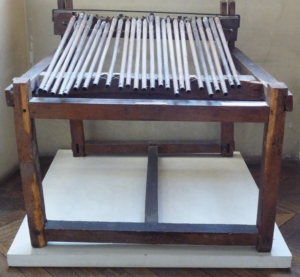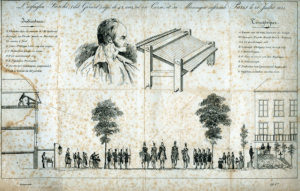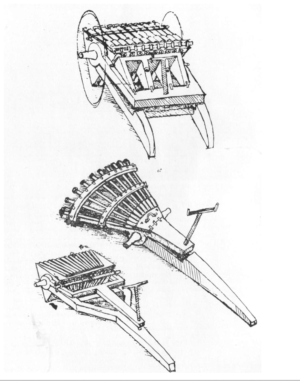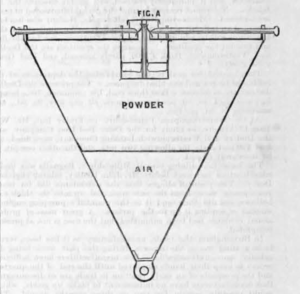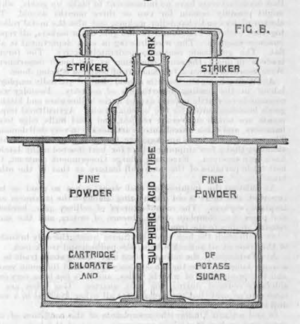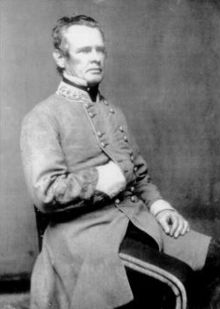I’ve been on the trail of a mystery and found some interesting descriptions of Emmet’s IEDs from (see earlier posts). In the attempted uprising in Dublin in 1803, Emmet designed some “exploding beams” as referred to as “Emmet’s infernals”. Here’s a description of how they were made:
Mr. Emmet had several square beams, twelve feet long, sent to the depot at Thomas Street, which he intended to have got bored with a small pump auger, not in the centre but nearer one side, and the hole was to be perforated to within one foot of the end, and then filled with powder till it came to a foot from the mouth. The hole was then stopped with a plug a foot long, of the same diameter, well spiked to prevent it from coming out. A touch-hole was to be perforated in the middle of the beam on the side which the bore approached the nearest, and a pivot set on each end on which common car wheels were placed and turned. Two cases five feet long each, filled with small stones and combustibles were to be placed at the top of the beam. The explosion of this machine placed as an obstacle before the enemy must have a terrible effect.
I’ve also found a description of how the rockets were constructed in the concealed workshops behind false walls. There is no mention of the exploding “warhead’ which I also assumed was present. Perhaps I might reassess that assumption – at least some Rockets used by Tipu Sultan in the Mysore campaign a few years earlier relied on blades attached to the front of the rocket, and maybe didn’t have an exploding warhead.
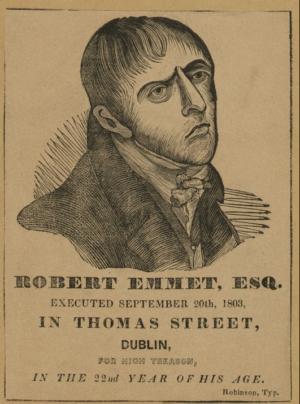
Emmet assigned to a Mr Johnstone the task of preparing the rockets and left him very detailed instructions. Mr Johnstone is described as being some sort of expert – crucially it is said that he had previously served with the East India Company and perhaps made rockets for them – this would have been about the time that The East India company was fighting the Mysore wars against Tipu Sultan, who were using rockets against the Company. Perhaps Johnstone was involved in making copies for the East India Company and brought his expertise to Dublin.
Here’s the description from a primary source:
There was a man who went by the name of Johnstone who had spent several years in the East India service, where he had frequently been employed in preparing fire-works. Perhaps this man with Robert Emmet were the real inventors of those rockets, latterly universally known under the appellation of Congreve rockets — be that as it may, I think it only right to relate here all I know of the matter. At Mr. Emmet’s request I called on Mr. M. the gunsmith, and showed him a strong piece of paper shaped in a certain way, which was to serve as a model to have tubes twenty inches long, two and a-half inches diameter, cut out of strong sheet iron; as soldering would be liable to melt with the fire, they were to be clasped and well hammered on the joints, which would render them quite solid. The sloped shape at one end formed a point like an arrow. The gunsmith soon brought me a tube made after the model with which both Mr. Emmet and Johnstone were well pleased. Consequently I had to tell him to have several hundreds of the same description made as soon as possible.
Johnstone set to work mixing the ingredients to fill those tubes, composed of powder, nitre, sulphur, etc., and when this stuff was prepared, it had the appearance of wet mortar. But everything was done according to Mr. Emmet’s instructions; he consulted a scientific work respecting the way such materials should be prepared, and even the way the tubes were to be filled, the size of each portion to be put in at a time, the weight of the hammer, the plug to drive it down, the number of strokes to be given before another portion was put in. An iron needle was placed in the centre of the tube around which the mortar was tempered, and when the needle was drawn out, the hole was then filled with powder. Thus prepared, they were to be fastened with strong wire to a slight pole about eight feet long at one end; and from the other end a cord prepared as a fuse would convey the fire to the mouth of the tube. A small trestle four feet high was provided on which the pole was to rest to be poised and sent off in the direction of the enemy.
Here’s a description of a trial firing
Johnstone, who was making the rockets, brought one of them ready prepared, so we all went into the fields; that is, Mr. Emmet, Russell, Dowdall, Hamilton, etc. The rocket was made fast to a pole with wire, and rested on a trestle ; the match being put to it, it went off like a thunderbolt, carrying the pole along with it, and throwing flames and fire behind, as it advanced, and when it fell, it went on tearing up the ground till the last of the matter with which it was filled was completely consumed. Mr. Emmet and Johnstone were quite satisfied with the effect it produced, and they decided that all the rockets or tubes should be prepared and filled in the same manner; the cord which was placed along the pole to serve as a train or match did not communicate the fire quick enough, but that was easily remedied at the depot by preparing others with stronger liquid, etc.
Now Johnston is an interesting character and aside from his supposed service with the East India Company is described as “a man with no past”. According to one report Johnstone was working in one of the rocket making workshops when an “accident” occurred and it blew up, blowing the roof off the building. This caused Emmet to launch his rebellion prematurely. He then disappears from the scene. Emmet’s associates accused him of being a British spy who blew up the workshop on the orders of British spymasters, citing his lack of history, his disappearance and the fact that the British did not investigate the explosion as significant factors.
Another, conflicting, report says that the explosion as caused by a Michael McDaniel – who was drinking at the time and accidentally initiated a fuze he was preparing. This report suggests that after the explosion he was tasked by Emmet with buying blunderbusses for the rebels. Emmet gave him “60 guineas” for the purchase, but McDaniel disappeared with the money never to be seen again.
Another of the rebels involved Pat Fenerty became a “super-grass” and gave evidence against the rebels, before ending up working Woolwich on the British Congreve rockets.
Complicated, but certainly indicative of a disastrous rebellion riven with incompetence and British spies.
